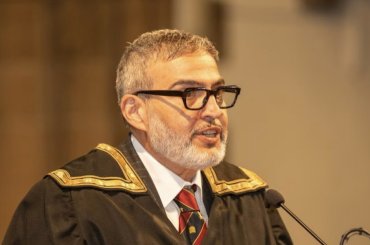In the last month, ISIS has been responsible for bombings in Ankara, Baghdad, Beirut, and Paris, taking the lives of hundreds of innocent people while expanding the Syrian and Iraqi conflicts well beyond their borders. For better or worse, the bombings in Paris set off a wave of social media debates about ISIS that became wrapped up in larger conversations about hierarchy, hegemony, and the politics of global grief. Why, for example, did Facebook offer a safety check-in for Parisians and not Lebanese? Why did the Western media only notice ISIS’ expansion when Europeans, and not Lebanese, Turks, or Iraqis, were killed by ISIS suicide bombers? These debates are important and valuable to have in the aftermath of such tragedies because they de-normalize narratives of exceptionalism that permeate global discussions when terrorism strikes in the West. In Europe, Canada, and the United States, we immediately witnessed differing responses from political leaders to the tragedy, from US presidential candidates such as Donald Trump declaring that he would “bomb the shit out of them [ISIS]” and governors “banning” Syrian refugees from entering their states, to European countries closing their borders to refugees. Such calls for more violence or for restrictions on refugees – who are themselves fleeing the kind of terror we saw in Baghdad, Ankara, Beirut, and Paris – are not only misguided, but they reinforce ISIS’ eschatological worldview. They are also unhelpful in answering the question that everyone has on their minds right now – What is to be done about ISIS?
Serious, sober responses to this question first require parsing through the web of anger, xenophobia, and prejudice that the bombings of the last month have engendered. France’s initial response – the bombing of more than 20 targets in Syria that included a medical clinic – may have satisfied the immediate need for retribution but this came at the expense of innocent Syrian lives. Similarly, the moves within Europe and the United States to restrict refugee flows will only hurt those already suffering from violence and repression in places like Syria, Eritrea, Afghanistan, and Iraq. Surely, there are better options and pathways moving forward.

Such directions must be informed by a fundamentally different framing of the conflict that does not see ISIS simply as a problem simply to be erased or bombed out of existence. The attacks of the last month demonstrate the failure and vacuity of the American-led bombing campaign against ISIS in Syria begun in August 2014. Since the air campaign began, the group has not suffered significant contraction of territory under its control and, as the bombings of the last month have demonstrated, has actually increased their capacity to commit mass violence beyond Syria and Iraq. The group’s expansion in a context of sustained aerial attacks highlights one of the main criticisms of the American-led campaign from the beginning, mainly, that it was treating symptoms and not the problem. By concentrating attacks against ISIS targets while refusing to implement a no-fly zone or provide heavy weaponry to rebel groups fighting the Syrian regime, the American strategy was doomed to failure from the very beginning because it never involved serious efforts to bring about a political transition in Syria that could end the conflict. In large part, this stemmed from a false dichotomy adopted in the West, that the ‘choice’ in the conflict was either between ISIS or the Syrian regime. The revival of the Hitler or Stalin dilemma the West faced in the 20th century is highly problematic because it assumes that these are the only choices for Syrians moving forward. This is simply not the case. As such, these realities should force a rethinking of the strategy of confronting ISIS solely through bombing campaigns.
The expansion of ISIS violence beyond Syria and Iraq is shifting the international dimensions of these conflicts in disturbing ways. The increased transnational capacities of ISIS portend unknowable shifts in the Syrian and Iraqi conflicts and the potential for continued and sustained spillover into neighboring countries and into Europe. The expansion of the geographic battlefield of these conflicts thus necessitates a comprehensive, generational response to the Syrian and Iraqi conflicts, one which eschews simplistic and temporary solutions involving bombing campaigns that simply do not work and hurt civilians, for ones that address the root structural causes of ISIS’ rise and its expansion beyond Syria and Iraq.
Thus, beyond merely rethinking the efficacy and utility of sustained aerial bombardment as the response to ISIS in Syria and Iraq, there needs to be a long-term commitment to unraveling the material and ideological structures that sustain ISIS. In a region where the conflicts are multilayered and complicated, the waters in this regard are much less murky. Wahhabi doctrine, which lies at the core of ISIS’ worldview, is one that fosters sectarian hatred, violence, and extreme social conservatism, and emanates from the West’s second-most strategic ally in the region, Saudi Arabia. This doctrine has provided the ideological background for ISIS’ leadership, its core fighters, and adherents and provides the ideational structure for the new Islamic society ISIS purports to want to create. It is precisely this doctrine that has given rise to the kind of iniquitous practices of ISIS and which has fostered such extreme violence against civilians in Syria, Iraq, and beyond.
Doctrine cannot simply be blown up or willed away. Delegitimizing the ideology that sustains ISIS involves direct confrontation with Saudi Arabia and engagement with its network of clerics that propagate and disseminate Wahhabi doctrine throughout the world. The conditions that permit such doctrines to gain traction must thus be at the core of any framing of the problem. This is an extremely sensitive issue, both in the West and in Saudi Arabia. It is especially sensitive in a context where military contracts – including a 10 billion Euro contract signed by France and Saudi Arabia in October 2015 – bind Western states economically to Saudi Arabia. Whether and how to engage with and delegitimize Wahhabi doctrine is one of the central dilemmas facing the region and the world today.
It is high time that we begin to name and identify some of the central structural and ideological issue plaguing the region that foster instability, chaos, and violence. Such a discussion should begin by rejecting the strategic foundations of aerial bombardment or border closures as strategies to deal with ISIS and instead engage directly with both the ideological underpinnings of ISIS and the ways in which continued stalemate in Syria makes possible ISIS’ expansion in that country and, now, the world.



Yet the clueless chorus of us politicians want the Sunnis of Saudi and Qatar to form an army to go and fight the Sunnis in Isis they created and support. How can we expect any solution from these people who don’t get it not republican not democrat. If anyone wants to hear a breath of enlightenment look up tulsi gabbard of Hawaii she actually gets it
GW Bush made the decision to back the Sunni despots against the so called ‘Shia arc of extremism’ hoping to isolate Iran, Syria, Hezbollah and Iraq Seymour Hersh describes this strategy in ‘The redirection’ …
“To undermine Iran, which is predominantly Shiite, the Bush Administration has decided, in effect, to reconfigure its priorities in the Middle East. In Lebanon, the Administration has coöperated with Saudi Arabia’s government, which is Sunni, in clandestine operations that are intended to weaken Hezbollah, the Shiite organization that is backed by Iran. The U.S. has also taken part in clandestine operations aimed at Iran and its ally Syria. A by-product of these activities has been the bolstering of Sunni extremist groups that espouse a militant vision of Islam and are hostile to America and sympathetic to Al Qaeda”. http://www.newyorker.com/magazine/2007/03/05/the-redirection
..And who would have the most credibility in an Intellectul/religious/political critic of the virulent ISIS doctrinal set of beliefs…..??????
Samer
While I totally disagree with your suggestion that giving “heavier” weapons to “rebels” in Syria – which almost all are linked to Al Qaeda and their wahhabi doctrine – or starting an air war against the Syrian air and air defense forces and the forces of Syria’s partners including Iran and Russia – what you call a “no fly zone” – would have brought anything else than even more death and destruction to please the Sauds and Tel Aviv, I completely agree that the extremist Saudi doctrine of wahhabism is, besides the zionist regime allied with the Sauds, the a real important source of many problems of the arab world and far beyond.
A couple of months ago I tried to promote this blog article, but few wanted to listen. Quote:
There are lot’s of background information and links in that article, and it is also naming and shaming western and Israeli complicity in spreading wahhabism.
Hey, don’t forget the Russians in your grocery list of bombings, they lost a lot a whole plane load of people. They also have a stake in this game now.